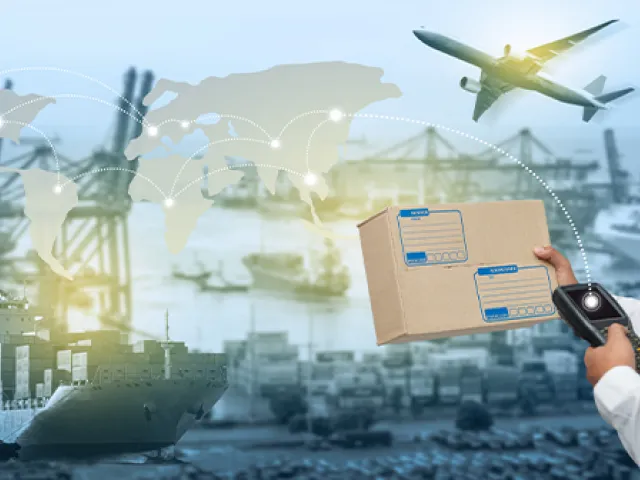Table of contents
Leading life sciences and pharmaceutical companies must acquire the necessary real-time supply chain information from all third-party logistics partners to fuel better and faster decision making. By doing so, they can finally take the next leap forward in enhancing inventory visibility, streamlining order fulfillment processes, and reducing costly safety stock held in inventory. At the same time, 3PLs that desire to increase their market share and gain a competitive advantage are using new digital information sharing capabilities to meet customer demand and ensure their customers have the latest orders and inventory data at their fingertips.
Unfortunately, there hasn't been a fast, simple, and cost-effective capability to provide high-quality digital integration and data orchestration between these supply chain partners—until now. TraceLink MINT for Logistics leverages the proven TraceLink network—consisting of more than 291,000 global onboarded and authenticated trading partners—to enable real-time integration and visibility between manufacturers and 3PLs at a more cost-effective price point and faster speed than any vendor in the market.
That was a key learning from the TraceLink webinar, "Digitalize Manufacturer and 3PL Relationships to Improve Customer Service, Reduce Costs, and Ensure Product Availability," which explored the critical need for integration between manufacturers and 3PLs. Here are three more key takeaways from the webinar for manufacturers and 3PLs:
1. Webinar poll results reveal critical challenges and the power of supply chain digitalization
Due to a lack of real-time integration, life sciences manufacturers and 3PLs often lack the capability to digitally share common business transactions like inventory balance reports, warehouse ship orders, ASNs, and purchase/sales orders.
Polls taken during the webinar revealed that a lack of real-time order confirmation creates challenges for at least 64% of life sciences manufacturers participating in the survey, and more than half indicated a lack of integration with 3PLs leads to inaccurate inventory planning and excess working capital charges. Additional manufacturer challenges represented in the survey included limited or a complete lack of visibility into inventory held at 3PL warehouses and inefficient order fulfillment processes.
The majority of 3PLs participating in the webinar polls reported that providing inventory information and exchanging business transactions with customers via traditional methods like phone calls, email, and spreadsheets is time-consuming and cumbersome. More than 60% reported that establishing point-to-point (P2P) integrations with each customer is not scalable or cost-effective, and more than half noted that maintaining P2P integrations is a significant challenge.
More than 80% of 3PLs responding to webinar polls agree that real-time digital integration would enable a more strategic customer relationship. In this video, Salman Pathan, CEO of Globyz Biopharma, which provides 3PL services, explains why digital integration is critical to helping 3PLs attract and retain customers.
"What we are seeing now is that things are shifting to orchestration," said webinar guest speaker Flavio Aliberti, Vice President of Business Strategy at Genpact, a provider of 3PL and 4PL services. "The big change that we are experiencing here is that it's not going to be only about efficiency any longer. It's about creating value from the ecosystem. The more we share, the easier it's going to be to increase revenue. To achieve that, we've got to increase the data integration at the ecosystem level and we've got to increase connectivity."
2. TraceLink MINT is most cost-effective path to supply chain digitalization
TraceLink MINT for Logistics enables manufacturers and 3PLs to integrate with 100% of their supply chain partners with just a single integration to the TraceLink network per transaction type. With MINT, manufacturers and 3PLs can digitalize order-to-cash with direct ERP-to-ERP or ERP-to-UI integration, improve collaboration and OTIF, and reduce cash-to-cash cycle time. Some of the business transactions that manufacturers and 3PLs can exchange digitally with TraceLink MINT include:
- Inventory Balance Reports
- Inventory Updates
- Warehouse Stock Transfer Shipping Advice
- Warehouse Stock Transfer Receiving Advice
- Warehouse Shipping Orders
- Warehouse Shipping Advice
- Advance Ship Notices
- Purchase Orders
- Purchase Order Acknowledgements
- Invoices
- Remittance Advice
Additionally, MINT is being offered at a disruptive price point. Manufacturers and 3PLs can begin by integrating with one supply chain partner for free (permanently!), and gradually expand to 100% of their partners to realize dramatic efficiency gains at the industry’s lowest price point. Your supply chain partners are onboarded by TraceLink no cost, and they pay no subscription fee as a trading partner.
3. Webinar attendees asked several questions about TraceLink MINT
Webinar attendees were highly engaged and wanted to know more about TraceLink MINT for Logistics. One attendee wanted to know if MINT really does provide visibility into all shipments across all of a manufacturer's 3PL partners.
"Yes. Shipments are a critical part of providing visibility, including what's coming in and what's going out, and what has been shipped to the end customer," said Bharath Sundararaman, General Manager of Life Sciences Manufacturing at TraceLink. "You may be working with a 4PL like Genpact, and they may be offering you a control tower to provide visibility into what they are doing on your behalf. But we are more than capable through MINT to provide that visibility of what your 3PLs and 4PLs are doing for you. Why is that important? Because you don't want to have 25 different control towers across different 3PLs across different regions. We work with them to bring that information into a single source of truth across all of your 3PLs and 4PLs. You will have that information in your control tower from your 4PL, and you will also have that in your MINT application dashboard because that is critical for success."
Another webinar attendee wanted to know if MINT made it possible to share data with complete interoperability across all supply chain partners, regardless of which systems and data formats those partners use.
"Yes. That is the core of the TraceLink ‘Integrate-Once™’ value proposition, which enables customers to use the format of their choice," Sundararaman said. "For example, if you use SAP as your ERP, you work in your iDoc format. TraceLink takes care of all the integration and alignment with your partners who will all have different systems and different formats—or they can use the User Interface if they lack a system. TraceLink handles all of that for you."
Be sure to watch the entire webinar on demand to learn more. Ready to get started with MINT for Logistics? Send an email to %20MINT [at] TraceLink.com (MINT[at]TraceLink[dot]com) to schedule a meeting with us today.






